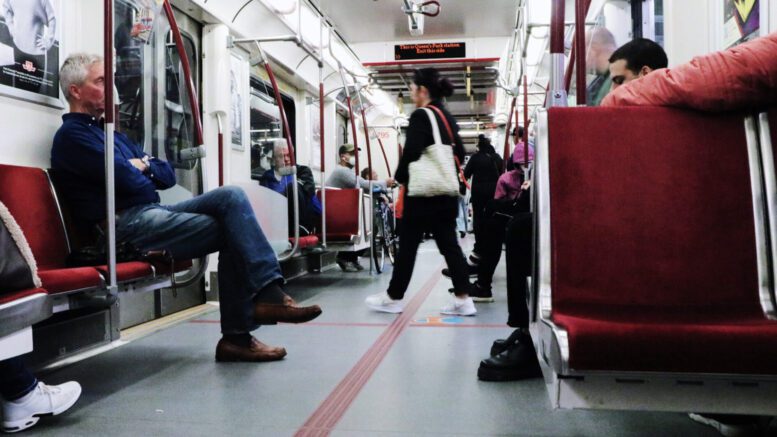With the recent increase in attacks on the TTC, many riders are afraid to use public transit in Toronto and are seeking reassurance from the city’s mayoral candidates regarding their plans to address the problem.
“I do feel unsafe whenever I am standing on the platform due to the lack of platform screen doors and a lack of visible security in many stations,” said Stanford Chang, a daily TTC user and student at the University of Toronto.
The TTC’s commitment “to provide a reliable, efficient, and integrated bus, streetcar, and subway network that draws its high standards of customer care from our rich traditions of Safety, Service, and Courtesy” is under scrutiny due to a surge in reported cases of aggressive and violent incidents.
The TTC serves as a necessary form of public transportation for riders, with 1,803,800 trips made on an average weekday. The system connects Toronto residents, tourists, and 905 commuters throughout the city.
The security measures on the TTC play a pivotal role in ensuring that all riders arrive at their destination safely without fear of danger, but current security plans over recent years are not playing an effective role. In 2022, there were 1,068 incidents, while 2021 saw 734 such incidents, 2020 saw 735 and there were 666 in 2019.
Changes are needed for riders to feel safe

Chang says he wants the TTC to improve their rider experience.
“It’s hard to encourage others to use public transit when people face losing access to cell service in the subway, getting stuck in traffic in streetcars, or having to wait 30 minutes for the next bus,” he said.
The TTC implemented a higher security presence earlier this year and found that the number of offenses against customers was 1.70 per one million boardings for March — a decrease from 2.15 in February.
What TTC riders are saying:
On Monday, June 5th, we asked five young riders how safe they felt when riding the TTC.
Here’s what they had to say:
“No, too many incidents. I hate going by myself especially.” — Olivia Beltrano, Student.
“No, too many crimes have happened.” — Maya Essery, Student
“It depends on the time of day and the area.” — Peter Patsiopoulos, Service Clerk
“I usually don’t take it unless I’m with other people I know.” — Jake Prudom, Student
“No, I need service on my phone.” — Stacey Speranza, Podcast Host
Systems are failing to take care of people

A lot of leading security issues on the TTC are related to social issues; winter conditions, for example, lead to higher rates of unhoused people using transit and higher mental health incidents. The TTC report’s CEO commentary says the commission and its partners will provide “alternative resources to persons experiencing homelessness and individuals with complex needs using TTC spaces for shelter.”
“Public transit is a public space. So what’s happening is that systems and governments outside of the TTC are failing to take care of people,” said Shelagh Pizey-Allen, the director of TTCriders, a democratic volunteer-led organization of transit riders. “There are things that the TTC can do, but the other element is the systems outside of the TTC.”
Although the TTC has contributed its part to improve these situations through community outreach to support people who are unhoused and hired workers to connect with those people, the problem is there’s nowhere for people to go, said Pizey-Allen.
“There’s nowhere safe. There’s no safe indoor shelter space, there’s no safe indoor 24/7 space. Unhoused people are being unfairly scapegoated for violence, they actually are more likely to experience that violence, and it’s unsafe for them to be sheltering in transit but it’s because they have nowhere else to go,” she said.
The safety of public transportation directly influences the overall perception of the city’s safety. Pizey-Allen said that the public is looking for a leader who will put a focus on housing issues and who will pass a moratorium on encampment evictions.
“The other element is investing in non-police responses to mental health crises and violence because, for some, police can cause further harm and violence,” she said.

The June 26 election is a potential first step towards a safer TTC, providing an opportunity for all mayoral candidates to present their safety and security plans and allow Torontonians to make an informed decision.
“Everyone benefits from a strong public transit system, even if you are someone who needs to rely on your car,” said Pizey-Allen.


